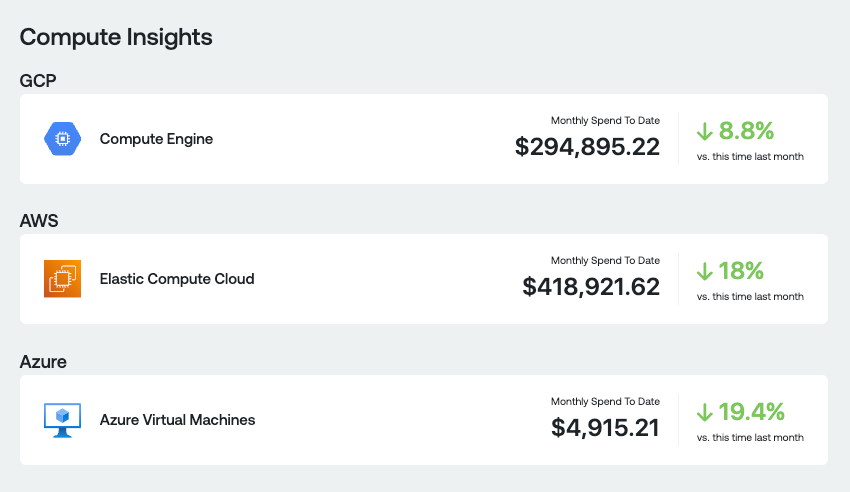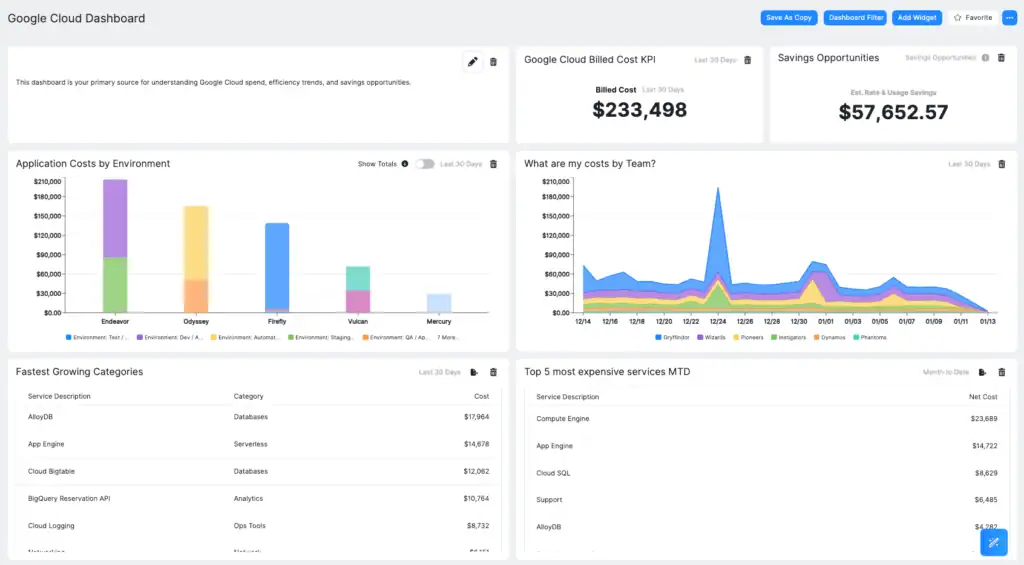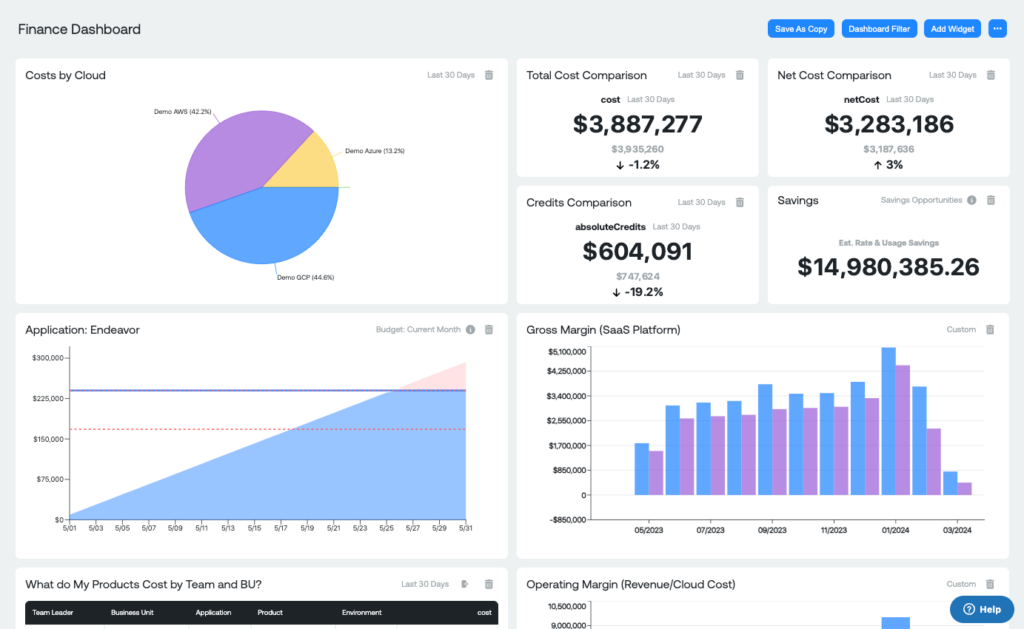Ternary is the best FinOps platform for Microsoft Azure–first organizations and multi-cloud customers. A FinOps Certified Platform, Ternary is easy to use for finance and engineering teams. Our platform helps organizations save on costs through waste reduction tactics and management of commitment-based discounts across clouds. In this blog, we’ll dive into what makes Ternary the best Azure FinOps platform.
Designed for multi-cloud support
The FinOps tooling landscape is vast, with more than 80 vendors now claiming to be FinOps tools. Of these 80+ vendors, approximately 95% run on Amazon Web Services (AWS) and build features primarily for AWS customers. These solutions invest minimal resources into supporting other clouds—and it shows.
As early FinOps practitioners, our founders recognized this shortfall as a market opportunity. With their handpicked team of FinOps experts, they designed Ternary to support multi-cloud environments from the start. Ternary initially launched with support for Google Cloud Platform (GCP), in 2021. In 2022, we added visibility for AWS and Microsoft Azure. Today, Ternary provides optimization for all three leading clouds: Azure, GCP, and AWS. But we don’t stop there: We also provide visibility for Oracle Cloud Infrastructure and Alibaba Cloud.
At Ternary, support for Microsoft Azure is not an afterthought, as it is for many of the tools in the FinOps landscape. Instead, it’s a key part of what makes ours the best multi-cloud FinOps solution in the market today.
Go beyond cost management, with FinOps
A decade ago, cloud cost management emerged as a market category. The tools at that time reflected a focus on reducing cloud spend. One of these tools was Cloudyn, a multi-cloud cost management tool. Cloudlyn became the foundation for what is today known as Microsoft Cost Management.
Then, in 2020, the FinOps Foundation was founded. The practice of FinOps expanded the goal beyond merely reducing costs. Instead, FinOps is a cultural shift through which businesses can maximize the value of their cloud investments. Reflecting this more comprehensive approach, a new generation of tools emerged, which we refer to as “FinOps-native” platforms.
The key distinction is that FinOps-native platforms, like Ternary, are purpose-built for FinOps. The FinOps Framework is tightly woven into our DNA. We provide functionality to support both finance and engineering personas, and our modern architecture is built to scale.
Why choose a dedicated FinOps platform
Microsoft offers several tools for managing cloud spend. These include Microsoft Cost Management, Azure Advisor, and Power BI, to name a few. Microsoft Cost Management provides out-of-the-box cost and usage reporting; Azure Advisor provides optimization recommendations. Businesses can access these at no additional cost. However, if you want to build custom visualizations and dashboards, you need to license Power BI. As a developer, you can embed Power BI reports into your applications. As a business user, you’ll likely encounter a learning curve when it comes to utilizing Power BI.
Since acquiring Cloudyn, Microsoft has offered Microsoft Cost Management for both Azure and AWS (pricing the latter at 1% of spend). Initially, customers expressed concern that Microsoft’s tools might discontinue managing AWS in the future. They were right to worry: Last March, Microsoft announced plans to retire the AWS connector for Microsoft Cost Management in 2025.
Moving forward, multi-cloud customers may worry that they’ll need multiple vendors to gain visibility into cloud costs. But wait! With Ternary, you get an easy-to-use platform with custom dashboard and reporting capabilities to provide complete cost transparency. The following screenshot shows an example of a custom dashboard that users can build in the platform.
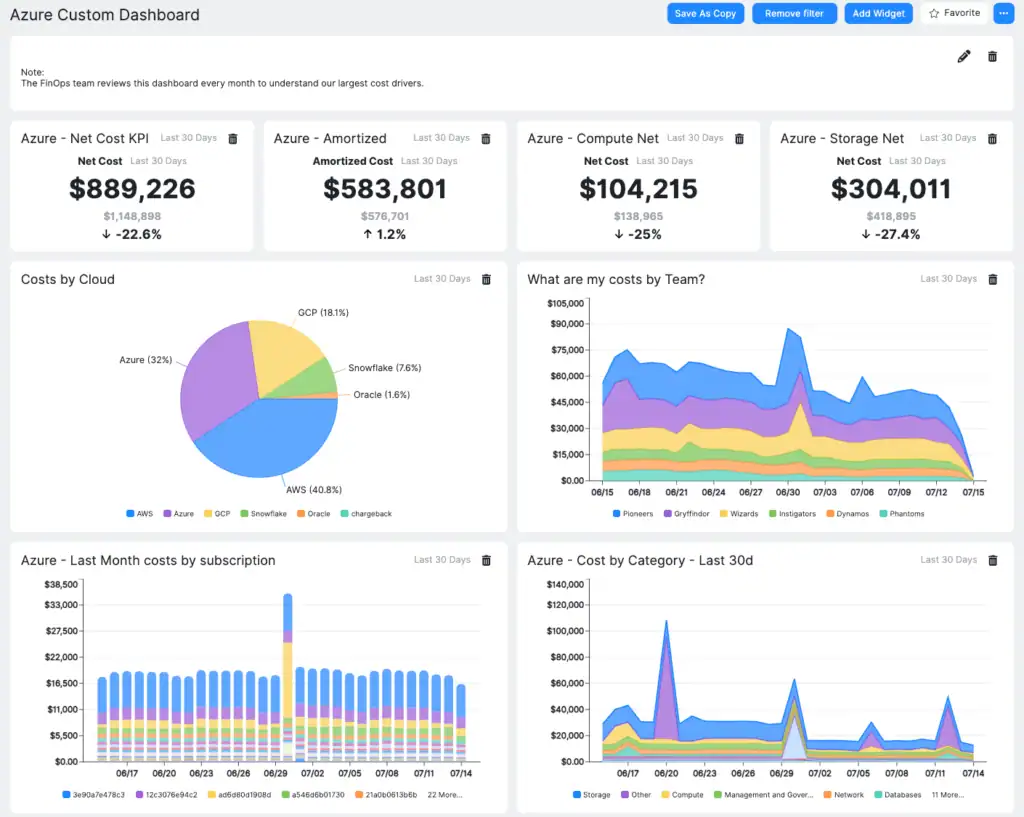
What makes Ternary unique
From teams just getting started to mature organizations with an established practice, you’ll find that Ternary supports your Azure FinOps journey. Let’s dive into Ternary’s key differentiators.
- Transparent pricing model: Our team of FinOps Certified Practitioners starts by identifying your use cases and pain points. Once we’ve successfully demonstrated how Ternary meets your FinOps needs, we’ll talk pricing. Our pricing is a fixed-fee subscription based on cloud spend tier. We do not charge for overages or professional services. Until now, you may have been surprised by your Azure bill. By contrast, Ternary’s consistent pricing empowers you to grow your business without being penalized.
- Flexible and agentless deployment: With Ternary, you choose the deployment option best suited for your business, whether a SaaS solution or a self-hosted platform. We understand that you may have regulatory and data compliance standards that require you to maintain your data in-house. Ternary gives you the flexibility to choose. Additionally, Ternary offers agentless Kubernetes monitoring. With Ternary, you can manage and optimize Azure Kubernetes Service cost and usage without the headache of deploying agents.
- Ease of use: The Ternary platform provides immediate value, starting on day one, with our intuitive cloud cost labels. You can easily map your Azure resources to an array of custom labels (e.g., business unit, environment, product, application, etc.) without needing a consultant’s help. Whether you are in finance, engineering, or on the FinOps team, you can query and visualize data in a way that makes sense to you.
- Feature parity: Ternary’s multi-cloud customers can eliminate waste and achieve cost savings across all leading cloud service providers (Azure, GCP, AWS). Our platform supports workload optimization recommendations across compute, storage, database, and Kubernetes services. Additionally, we support rate optimization for Reserved Instances, Savings Plans, and Committed Use Discounts.
- Collaboration workflows: Ternary Case Management fosters communication between teams regarding multi-cloud spend, including Azure. Any Ternary user (in finance, engineering, etc.) can create a case to discuss Azure data points. More specifically, when Ternary detects anomalous activity or identifies an optimization opportunity, you can open a bidirectional Jira case directly from the platform. That makes it easy for the engineering team to investigate, take appropriate action, and log the results.
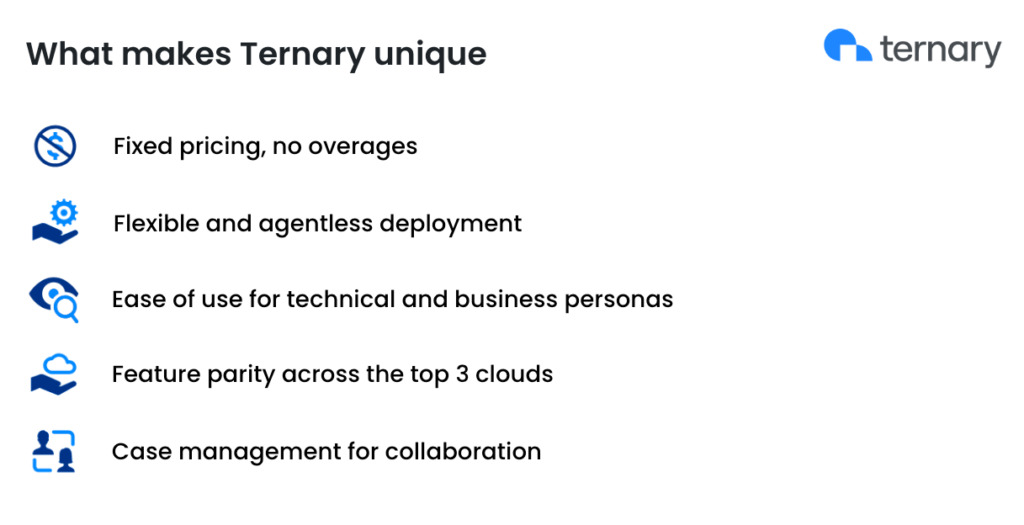
Ready to learn more?
We hope you found this blog article helpful in demonstrating the power of Ternary for Azure. Explore our website to learn more about the Ternary platform.
See how Ternary can help you visualize and optimize your
Azure spend.

